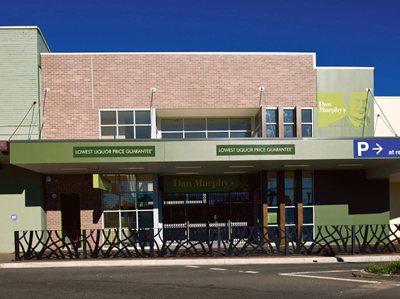The building industry is starting to realise the benefits of engineered or precast brick panel systems, especially in terms of speed and ease of construction. Danielle Bowling spoke to two firms who’ve seen the benefits of such systems in recent projects.
Brett Ward, General Manager Marketing at Brickworks Building Products
Austral Precast has launched the Vitesse Brick Panels system, which combines the aesthetic appeal, low maintenance and durability of genuine bricks – these are not thin facings but full bricks made by Austral Bricks – with the speed and time-saving inherent in precast construction.
Standard Vitesse brick panels are a single skin, 125 mm thick with loadbearing capability. Like all precast panels, they are manufactured off-site under controlled conditions, ensuring minimum waste and maximum quality.
The production process is similar to that for conventional concrete precast panels. Full bricks of standard dimensions – 230 mm wide, by 76 mm high and 110 mm thick – are carefully placed face down within conventional formwork. The courses and joints are aligned perfectly, both horizontally and vertically. Steel reinforcement is placed within double notches in the backs of the specially-designed bricks. The assembly is then slurried with a special high-strength grout, filling the joints and a 15 mm layer beyond the back of the bricks.

For its first commercial application, the facade of the new Dan Murphy’s outlet in Katoomba in New South Wales’ Blue Mountains, the architects specified two composite Vitesse panels. These hybrids comprised a standard 125mm thickness brick panel sandwiched with an additional 75 mm of reinforced concrete. The vertical panel was 9.1 metres by 2.5 metres and the horizontal panel 10.5 metres by 2.5 metres.
The structure of the two-storey building comprises precast concrete wall panels supporting post-tensioned concrete floor slabs and a steel roof frame. It was a difficult site, nestled between the two established buildings and fronting busy Bathurst Street, made more difficult by unseasonably-heavy rainfall that led to 90 wet days being declared.
“We were dewatering the site constantly,” says Danny Rhind, Sydney manager of HY Building Solutions, the design-and-construct arm of Hansen and Yuncken. Their direct client was Fabcot, the construction arm of Woolworths Limited, Dan Murphy’s parent company.
The decision to face the building in brickwork was partly an outcome of its location and the neighbouring backpackers and hotel. “It was just outside the Katoomba heritage zone, but too close to ignore it,” says project coordinator, Luke McKean, from architects I2C Design & Management. The Blue Mountains City Council was also keen for the facade to have a heritage appearance.
Traditional, laid-in-place brickwork may have been possible, although the tight site and 10 metre span of the opening would have made it an engineering and logistical challenge. The solution was Austral Precast’s Vitesse Brick Panels: real bricks with real mortar joints and traditional coursing in a panel that is fabricated off site and simply craned into position and fixed to the structure.
The bricks chosen were Austral Brick’s Bowral Murray Grey.
Installation required the partial closure of Bathurst Street. The procedures and equipment for placing and fixing panels were no different to traditional concrete panels. The horizontal panel was rebated into the vertical panel and the first floor slab, and the gaps filled with a standard epoxy paste. The brick joints were perfectly aligned across the two panels.
Because of the unseasonal weather, the $4.3 million project went over schedule, opening in December 2011 just in time for the Christmas rush. However the Vitesse manufacture and installation went smoothly. “It was probably one of the better runs we had on the job,” said HY Building Solutions’ Danny Rhind. I2C’s Luke McKean was also very pleased with the outcome, “We are certainly looking to use it on other projects,” he says.
Quick Facts
Dan Murphy’s Katoomba
-
Owner: Woolworths Limited
-
Client: Fabcot
-
Architect: I2C Design & Management
-
Builder: HY Building Solutions
-
Project value: $4.3 million

